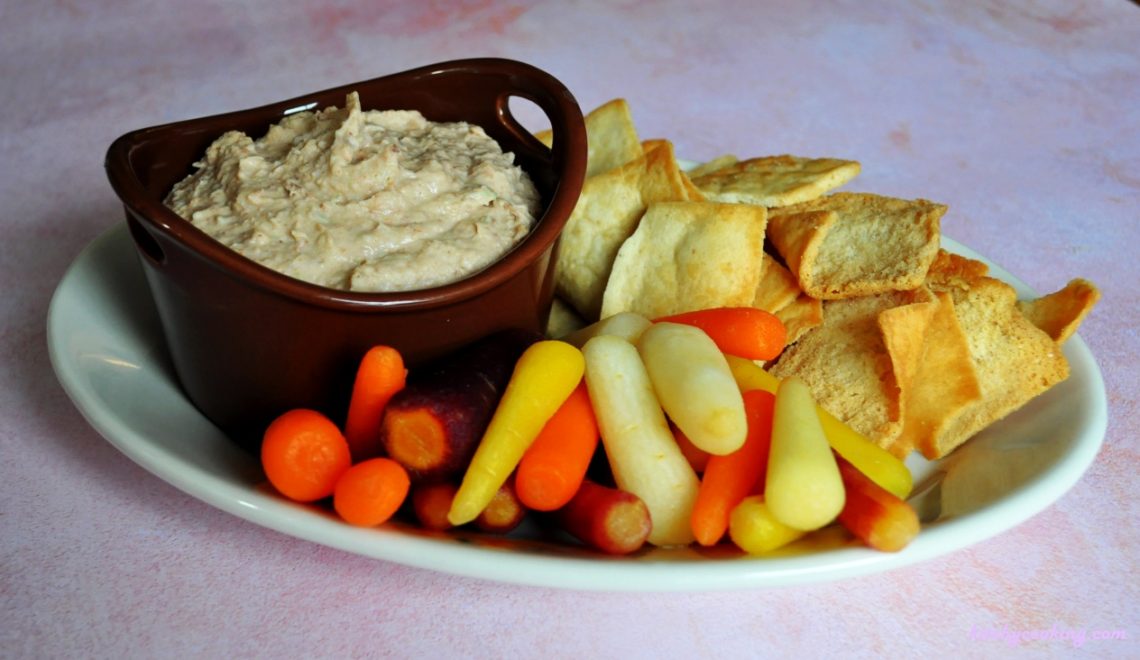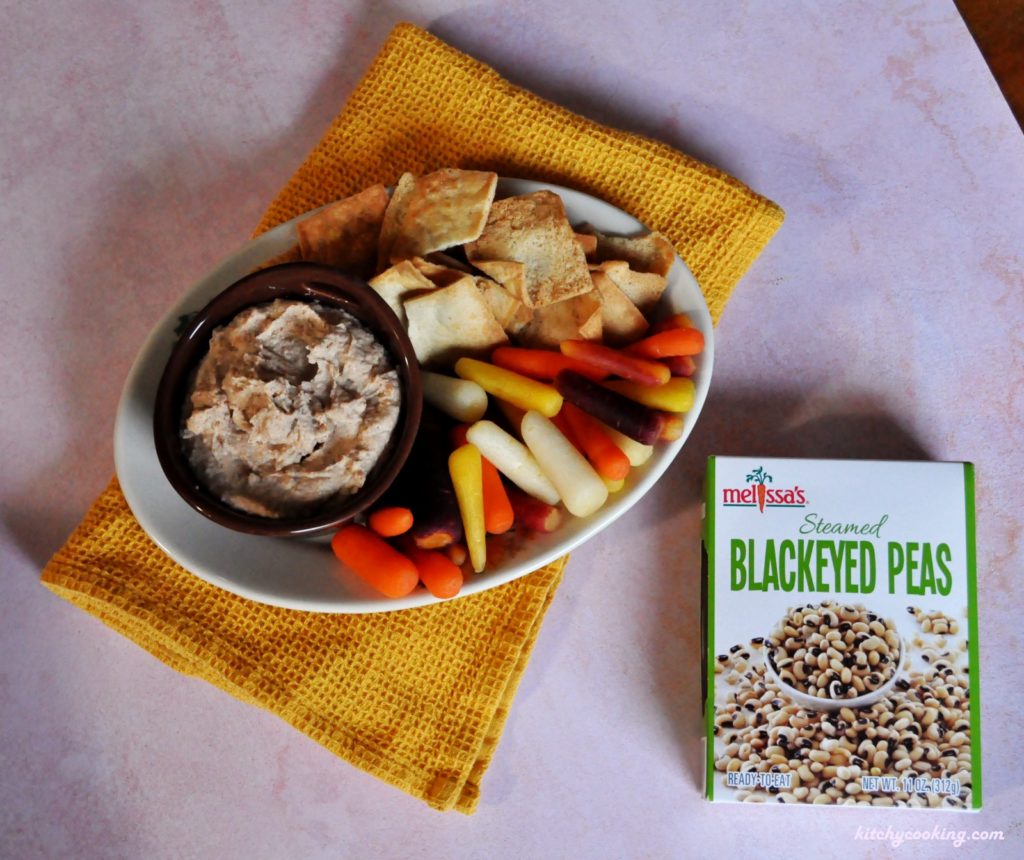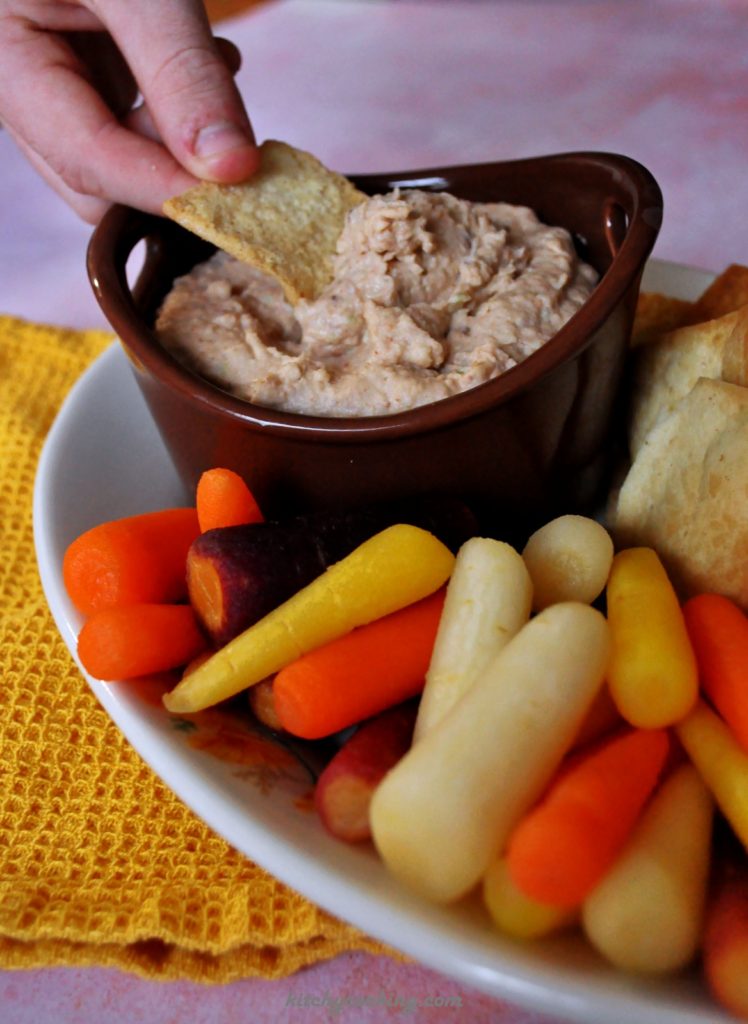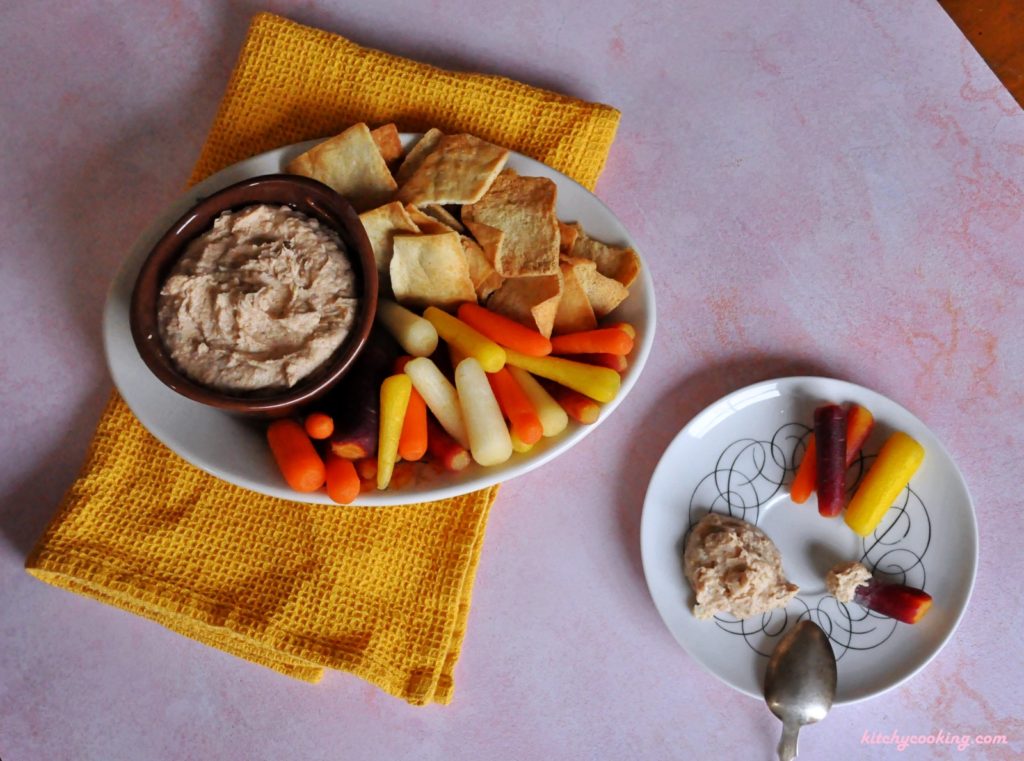Black-Eyed Pea Hummus

New Year’s Day is Friday and there’s a tradition that if you eat Black-Eyed Peas on New Year’s Day, you’ll have good luck in the coming new year. I don’t know about you, but with the way 2020 has gone, I could use a little luck, couldn’t you?
So, with that in mind, I hit up my friends over at Melissa’s Produce and ordered some of their delicious Steamed Blackeyed Peas. I love their steamed products. I’ve been adding them to recipes for years because they’re so easy to use. Since they’re already cooked, just open the package and add them to whatever you’re making. I’ve used their black-eyed peas in stews and pastas every New Year’s. They’re so good, I could eat them all year long. While I usually add them to hot entreés, there’s no reason I couldn’t add them to chilled dishes. Since they’re already steamed, they could easily be added to salads or turned into an appetizer. So, I did.
This year, I whipped up some hummus. I know they’re called blackeyed peas but that’s a misnomer. Turns out the black-eyed pea is actually a bean. So, it can be mashed like any other, making it a great choice for a nice, creamy hummus. I love my hummus full of garlic and lemon, so I made sure to add lots of both. But if you’re not a fan of garlic or lemon, feel free to cut back on the measurements. (I would use at least one clove and one tablespoon, though to round out the flavors).
Traditions
Now, you’re probably wondering where the tradition of eating black-eyed peas came from. Well, eating black-eyed peas for luck has been around for centuries. According to one source, Jews have been eating black-eyed peas since 500 A.D. to celebrate Rosh Hashana. I’m a reform Jew and did not know this story, but now I have 2 chances to get lucky by eating the little black-eyed bean. The more common story though, is the one that comes from the South during the Civil War. It is believed that the Union Army pillaged the Confederates’ food supplies but left the peas and pork because those items were considered animal food, not human food. The Southerners knew better and felt blessed to have these options during the the cold winters. Then there’s another theory that states the black-eyed peas are a symbol of emancipation for previously enslaved African-Americans, who were officially freed on New Year’s Day after the Civil War.
Often served with collard greens and/or cornbread to represent wealth, the peas are often found in a stews and soups as well. But how ever they’re served, the main goal is to eat as many peas as you can, so the upcoming year will be as bright and positive as possible. Since you’re grinding up 18 ounces of black-eyed peas with this recipe, I’d say you’re all set. And if you polish off the whole bowl, there shouldn’t be a dark cloud anywhere for the next 364 days, right? One can only hope. So, here’s to a brighter 2021. May your world be full of wealth, health and plenty of good luck!
Notes
Adapted from Cotter Crunch
History from Spruce Eats and Southern Living
Ingredients
- 2 (9 ounce) packages of Melissa's Steamed Blackeye Peas
- 1 green onion, chopped
- 4 garlic cloves, peeled and chopped
- 1/4 cup tahini
- 3 tablespoons olive oil
- 2-3 tablespoons lemon juice
- 1 teaspoon cumin
- salt and pepper to taste
Instructions
- Place the peas, onion, garlic and tahini in a food processor and blend until combined.
- Add the oil, lemon juice, cumin, salt and pepper and blend until smooth and creamy.
- Spoon into a serving dish. Serve with cut up veggies and/or pita chips.











